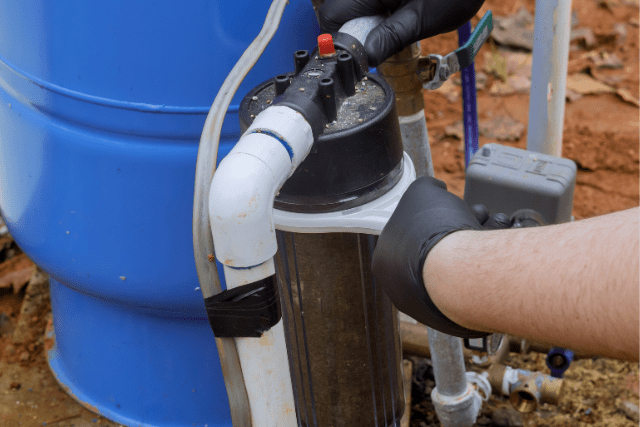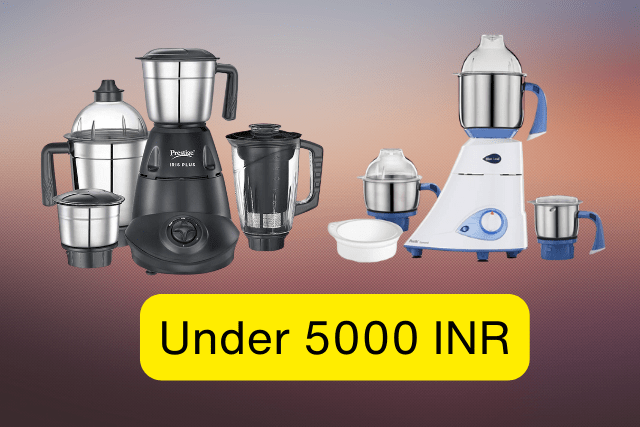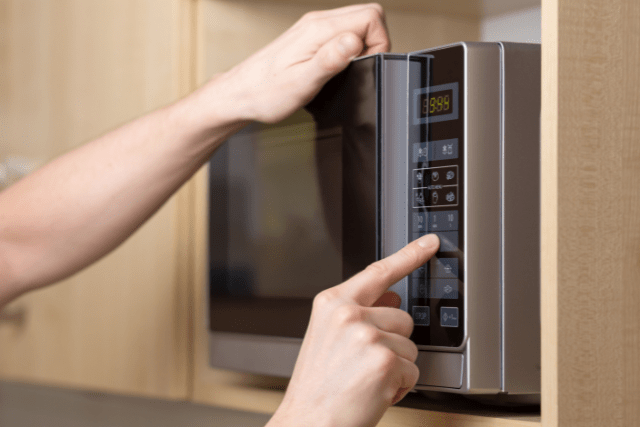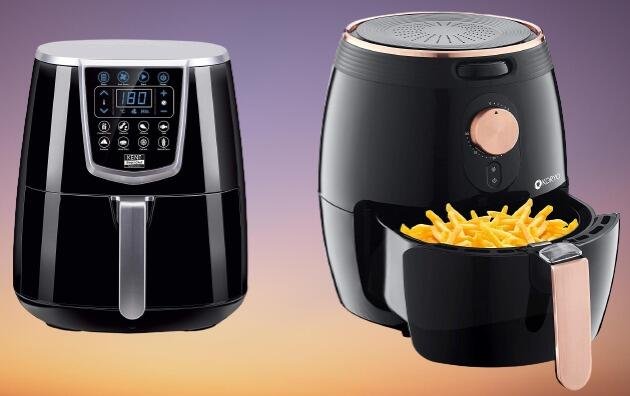Effective Water Purifier Maintenance helps to keep your water purifier in top shape. It must ensure you and your family access clean and safe drinking water. Welcome to our guide on maintaining your water purifier for optimal performance. By following these maintenance tips, you can maximize the effectiveness of your water purification system and enjoy the benefits it provides.
What are The Signs That a Water Purifier Needs Servicing?
A water purifier may show various signs that indicate it needs servicing. Here are some signs to look out for:
- Low water yield: If the water purifier produces less water than usual, it may be a sign that the filters must be replaced or the system needs to be cleaned.
- Unusual noises: Noises from the water purifier, such as the water pump, can indicate that the system needs maintenance.
- Unpleasant odor or taste: If the water from the purifier has an unpleasant odor or taste, it may be a sign that the filters need to be replaced or the system needs to be cleaned.
- Water not completely clear: If the water from the purifier is not completely clear, it may be a sign that the filters must be replaced or the system needs to be cleaned.
If you notice any of these signs, getting your water purifier serviced by a professional is important. Regular maintenance of water purifiers can help ensure that they function properly and provide clean drinking water.

Understanding Your Water Purifier
Before we delve into the maintenance process, let’s take a moment to understand your water purifier. Different types, such as reverse osmosis (RO), activated carbon, and UV-based purifiers, are available. Each type has unique components and functions, requiring regular maintenance.
Reverse Osmosis (RO) Purifiers
| Component | Function | Maintenance |
|---|---|---|
| Pre-filter | Replace every 6-12 months. | Replace every 6-9 months |
| RO Membrane | Removes contaminants such as fluoride, chlorine, detergents, and heavy metals. | Replace every 2-3 years |
| Carbon Filter | Removes remaining contaminants and improves the taste of water. | Replace every 6-12 months |
| Post-filter | Polishes the water before consumption. | Replace every 6-12 months |
Key Maintenance Steps for RO Purifiers:
- Regularly replace the filters as per the schedule mentioned in the table.
- Keep the purifier clean and sanitized.
- Inspect the tank and other components regularly for any damages or leaks.
- If possible, check the TDS level in the water. It may be time to replace the RO membrane if it’s high.
Activated Carbon Purifiers
| Component | Function | Maintenance |
|---|---|---|
| Activated Carbon Filter | Removes organic compounds and chlorine, improving the taste and odor of water. | Replace every 6-12 months |
Key Maintenance Steps for Activated Carbon Purifiers:
- Regularly replace the activated carbon filter.
- Keep the purifier clean and sanitized.
- Check for any damages or leaks regularly.
UV-Based Purifiers
| Component | Function | Maintenance |
|---|---|---|
| Pre-filter | Removes large contaminants and sediments. | Replace every 6-9 months |
| UV Lamp | Kills bacteria, viruses, and other microbes. | Replace every 1-2 years |
| Carbon Filter | Removes remaining contaminants and improves the taste of water. | Replace every 6-12 months |
Key Maintenance Steps for UV-Based Purifiers:
- Regularly replace the pre-filter, carbon filter, and UV lamp per the schedule mentioned in the table.
- Keep the purifier clean and sanitized.
- Regularly inspect for any damages or leaks.
Remember that maintenance schedules can vary depending on the water usage, brand and model of the purifier, as well as the quality of your water source. Always refer to the manufacturer’s instructions for specific maintenance guidelines.
Kitchen Weaver
Also Read:
- Different Types of Filters In a Standard RO Water Purifier
- Comparing Reverse Osmosis and UV Purifiers: Which Water Purifier is Best for Your Family?
Regular Cleaning and Maintenance Tasks
Regular cleaning and maintenance are essential to keep your water purifier performing at its best. Here’s a step-by-step guide to help you:
Cleaning the External Surfaces
Take a damp cloth and gently wipe the external surfaces of your water purifier. Pay special attention to areas more prone to dirt and grime buildup, such as the control panel and faucet. This simple cleaning routine helps keep your purifier looking clean and well-maintained.
Maintaining Filters and Cartridges
Your water purifier contains filters and cartridges that require attention. Follow the manufacturer’s instructions to clean or replace filters as needed. Rinse sediment filters to remove any trapped particles. It’s usually recommended to replace activated carbon filters according to the manufacturer’s guidelines. Regularly maintaining these components ensures efficient filtration and helps preserve the quality of the purified water.
Checking and Replacing Parts
It’s important to inspect all parts of your water purifier regularly. Look for any signs of damage or wear, such as cracks or breakage. If you notice any issues, promptly replace the damaged components to avoid further problems. Additionally, ensure that all connectors and tubing are properly fitted to prevent leaks or disruptions in the water flow.
Frequency of Cleaning and Maintenance
Refer to the manufacturer’s guidelines for the recommended cleaning intervals and filter replacement schedules. However, as a general rule, it’s a good practice to clean the external surfaces of your purifier monthly. Filter replacement frequency may vary depending on usage and water quality, so follow the specific instructions provided by the manufacturer.

Water Quality Testing
Regularly testing the quality of the purified water is an important aspect of maintenance. Here’s what you should do:
Importance of Testing Water Quality
Water testing ensures that your water purifier effectively removes impurities and provides clean drinking water. It helps you verify if the purifier is working optimally and identify any changes in water quality over time. Testing water quality is important for several reasons. Here are some reasons why water testing is important:
- Identify contaminants: Water testing can identify the presence of contaminants in the water, such as bacteria, viruses, chemicals, and heavy metals. Knowing the type and level of contaminants in the water can help determine the best course of action to treat the water and make it safe for consumption.
- Ensure safety: Water testing can ensure that the water is safe for consumption and does not pose a health risk to individuals who consume it. This is especially important for private well owners responsible for water quality testing.
- Prevent health issues: Water testing can help prevent health issues caused by contaminated water. Consuming contaminated water can lead to various health issues, including gastrointestinal illness, reproductive problems, and neurological disorders.
- Improve water quality: Water testing can help identify the source of contaminants and help improve the quality of the water. This can be done by implementing water treatment options or addressing the contamination’s source.
- Comply with regulations: In many areas, water testing is required by law to ensure compliance with regulations. This is especially important for public water systems, which are required to meet certain standards for water quality.
By testing the water quality, individuals can ensure that their water is safe for consumption and prevent potential health issues caused by contaminated water. Water quality results also help you maintain your schedules of servicing more deliberately.
Also Read:
- What is a TDS Controller in Water Purifier? And How it Works?
- Ever wonder what’s really in your water? Check the TDS level at home.
Recommended Water Testing Methods
There are several water testing methods available for home water purifiers. Here are some recommended methods from the search results:
Water testing kits: Water testing kits are the fastest testing method and contain test strips and a color wheel or chart. They can test for common impurities like chlorine and lead in city drinking water or contaminants like nitrate, bacteria, iron, and sulfur in well water.
Professional laboratory testing: This method delivers the most accurate results but takes several days to several weeks to get results. It can detect one particular contaminant of concern or test for a broader range of contaminants.
DIY water test kits: These kits are suitable for those who want a vague idea of the contaminants in their water or are looking for peace of mind that their water is clean. They can be used to test for the most commonplace contaminants in your water supply, such as lead, chlorine, pH, hardness, and other contaminants.
Tap Score Advanced City Water Test: This test offers a comprehensive analysis of your drinking water with easy-to-read results. It covers various potential contaminants, including lead, mercury, arsenic, and other metals; trihalomethanes; bacteria; and farm chemicals.
It is important to identify the contaminants in your water before choosing a water treatment system. Special testing may be needed to determine which VOCs are present in your water, and it is best to use a point-of-entry filter system or whole-house filter system for VOCs because they provide safe water for bathing, cleaning, cooking, and drinking.

Interpreting Test Results
When you receive the test results, compare them against local drinking water standards or guidelines. This will give you an indication of the quality of the purified water. Take appropriate action if the test results indicate any issues or deviations from the expected quality. This may involve contacting a professional for further assistance or adjusting the maintenance routine of your purifier.
Tips for Effective and Optimal Performance
To ensure that your water purifier continues to perform optimally, here are some important points to consider:
Water Pressure and Flow Rate
Maintaining the recommended water pressure is crucial for your water purifier to function properly. Check the manufacturer’s guidelines for the optimal water pressure range. Low water pressure can affect filtration, while excessive pressure can strain the system. Additionally, check for any restrictions or clogs in the system that may impact the flow rate. Clearing these obstructions ensures a consistent and efficient flow of purified water.
Addressing Common Issues
Keep an eye out for common issues that may arise with your water purifier. Leaks, loose fittings, or damaged tubing can disrupt the functioning of the purifier and compromise its performance. Promptly address these issues by tightening fittings, replacing damaged parts, or repairing leaks. By addressing problems as soon as they arise, you can prevent further damage and maintain the optimal performance of your water purifier.
Calibrating and Adjusting Settings
Your water purifier may have specific settings or calibration requirements. Follow the manufacturer’s instructions to calibrate the purifier accurately. Adjust the settings according to the water quality in your area and the desired output. This ensures that your purifier is tailored to your specific needs and provides the best possible performance in water purification.
Utilizing Features
Familiarize yourself with the features of your water purifier. Many purifiers come with additional functions that can enhance their performance. For example, some models have filter life indicators that notify you when to replace filters. Others may offer self-cleaning modes or automatic shut-off features. Understanding and utilizing these features can optimize the performance of your purifier and simplify the maintenance process.
Also Read: 10 Best Water Purifiers in India: Buyer’s Guide and Reviews
Water Purifier Maintenance Cost in India
Water purifier maintenance costs can vary depending on the type of water purifier and the brand. Here are some points from the search results that provide information on water purifier maintenance costs:
Annual Maintenance Contract (AMC): AMC is an agreement between the manufacturer and the owner of the water purifier specifying the terms and conditions for the regular service and maintenance of a water purifier. The AMC yearly maintenance cost for an RO water purifier starts at about Rs.1000- per year plus the price of spare parts, which is extra, or approximately Rs.3000- per year, with all parts included. This yearly maintenance cost for water purifiers consists of three visits per year by the manufacturer’s technician for regular checkups and one or two free breakdown emergency visits.
Low maintenance cost water purifiers: Some water purifiers require low maintenance costs. For example, the Pureit Marvella UV G2 has a long filter life of 6000 liters compared to the standard filter life of 3000 liters in ordinary UV purifiers. The maintenance cost is as low as 30 paise per liter. The Pureit Advanced Max Mineral RO+UV+MF+MP has a high filter life of 6000 liters, saving Rs. 1200 per year on the maintenance cost.
Maintenance cost of RO water purifiers: RO water purifiers are the most effective in removing impurities from water. However, they also cost substantially higher and have a higher maintenance cost. An RO water purifier’s maintenance cost can be anywhere between ₹2,000 to ₹6,000 per year, which includes replacing the RO membrane, other pre-filters and post-filters, UV lamp, and labor costs. The sediment filter and the carbon filter usually cost around ₹500 each and must be replaced every six months.
It is essential to consider the maintenance cost of a water purifier before purchasing it. While some water purifiers require low maintenance costs, others may require higher ones. Negotiating with the provider on the maintenance/AMC cost before entering a deal is also essential.

How to Reduce the Maintenance Cost of a Water Purifier?
Here are some tips to reduce the maintenance cost of a water purifier:
- Choose a water purifier with low maintenance cost: Consider the maintenance cost of the different types and brands available. Some water purifiers require less maintenance than others, and choosing one with low maintenance costs can help reduce the overall cost.
- Sign an annual maintenance contract (AMC): Signing an AMC with the provider for proper water purifier maintenance can help reduce maintenance costs. This yearly maintenance cost for water purifiers includes three visits per year by the manufacturer’s technician for regular checkups and one or two free breakdown emergency visits.
- Negotiate the maintenance/AMC cost: Before entering into an AMC with the provider, try to negotiate with them on the maintenance/AMC cost. If they give you a number, create your own and reach a middle ground.
- Regular cleaning: Regularly cleaning the water purifier can help prevent the buildup of impurities and prolong the life of the filters. This can help reduce the frequency of filter replacements, reducing maintenance costs.
- Use genuine spare parts: Using genuine spare parts for the water purifier can help ensure it functions properly and lasts longer. This can help reduce the frequency of repairs and replacements, reducing maintenance costs.
- Opt for expert maintenance: Opting for expert maintenance can help ensure the water purifier is adequately maintained, and any issues are addressed promptly. This can help prevent major breakdowns and reduce maintenance costs in the long run.
If you follow these tips, you can reduce the maintenance cost of your water purifier.
Extending the Lifespan of Your Water Purifier
To prolong the lifespan of your water purifier and ensure its continued optimal performance, consider the following practices:
Preventive Measures
Take preventive measures to minimize wear and tear on your water purifier. Avoid exposing it to extreme temperatures or direct sunlight, as these can affect its components and reduce efficiency. Additionally, regularly clean and sanitize all water contact surfaces to prevent the buildup of bacteria or contaminants.
Regular Servicing and Professional Maintenance
Schedule periodic servicing of your water purifier as recommended by the manufacturer. Professional water filter maintenance can help identify any underlying issues (e.g. leakage of water, damaged pipes of the ro system) and ensure that the purifier is functioning at its best. Trained technicians can inspect thoroughly, clean internal components, and make necessary repairs or adjustments.
Storing the Water Purifier
If you plan to be away for an extended period or not use the water purifier, it’s important to store it properly. Follow the manufacturer’s guidelines for storage instructions. This may involve draining the water, removing filters, and storing the purifier in a clean and dry location. Proper storage prevents any damage that may occur during periods of non-use.
By implementing these practices and maintaining a regular maintenance routine, you can extend the lifespan of your water purifier, maximize its performance, and continue to enjoy clean and safe drinking water.

Conclusion
Regular maintenance and care are key to ensuring the optimal performance of your water purifier and providing clean and safe drinking water. You can maintain your water purifier effectively by following the steps outlined in this guide. Remember to clean and maintain filters, test water quality periodically, address issues promptly, and take preventive measures to extend its lifespan. With these practices, you can enjoy the benefits of a well-maintained water purifier and the peace of mind of knowing you’re providing your family with high-quality drinking water.
Frequently Asked Questions
Q1: How often should I clean my water purifier?
A: The frequency of cleaning depends on the specific model and manufacturer’s guidelines. However, it’s generally recommended to clean the external surfaces monthly and follow the filter replacement schedule provided by the manufacturer.
Q2: Can I clean the filters of my water purifier myself?
A: You can clean some filters, but following the manufacturer’s instructions is important. However, certain filters may require replacement rather than cleaning, so it’s essential to refer to the guidelines provided.
Q3: How do I know when to replace the filters in my water purifier?
A: Most water purifiers have filter replacement indicators that notify you when to change the filters. Additionally, you can refer to the manufacturer’s guidelines for the recommended filter replacement schedule.
Q4: Is it necessary to test the quality of purified water from my water purifier?
A: Regular water quality testing is highly recommended to ensure your water purifier effectively removes impurities. Testing helps you verify the performance of your purifier and identify any changes in water quality over time. (Stop Believing These Water Purification Myths for the Sake of Your Health!)
Q5: Can I conduct water quality testing at home?
A: You can use home water testing kits for basic water quality tests. These kits are widely available and provide simple instructions for testing various parameters. Alternatively, you can send water samples to a certified laboratory for more comprehensive analysis.
Q6: How can I maintain the optimal flow rate of my water purifier?
A: To maintain the optimal flow rate, check for any restrictions or clogs in the system. Clear any obstructions and ensure that the water pressure is within the recommended range specified by the manufacturer.
Q7: What should I do if my water purifier leaks?
A: Check for loose fittings or damaged tubing if your water purifier leaks. Tighten the fittings if necessary or replace damaged parts. If the issue persists, it’s advisable to contact a professional for further assistance.
Q8: Can I adjust the settings of my water purifier for different water conditions?
A: Many water purifiers allow you to adjust settings based on the water quality in your area. Follow the manufacturer’s instructions to calibrate the purifier and optimize its performance for specific water conditions.
Q9: How can I extend the lifespan of my water purifier?
A: To extend the lifespan of your water purifier, follow preventive measures such as avoiding extreme temperatures and direct sunlight. Regular servicing, professional maintenance, and proper storage during non-use periods also prolong its lifespan.
Q10: When should I seek professional help for my water purifier?
A: If you encounter persistent issues, major leaks, or any problems beyond your expertise, it’s recommended to seek professional assistance. Trained technicians can diagnose and resolve complex issues, ensuring the optimal performance of your water purifier.
Q11: What are some common causes of low water yield in a water purifier?
A: Low water yield in a water purifier can be caused by sediment and hardness minerals, low water pressure, incorrect pump placement, and other factors. Regular maintenance and signing an AMC with the provider can help prevent this issue.
Q12: What are the common measures of the quality of water?
A: Measuring water quality is important to ensure it is safe for drinking, swimming, and irrigation. Common measures include temperature, pH, dissolved oxygen, conductivity, turbidity, bacteria levels, and salinity. Water quality can be measured using laboratory testing kits, probes, nets, gauges, and meters.







